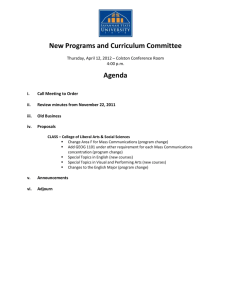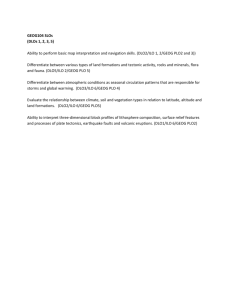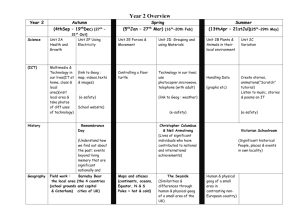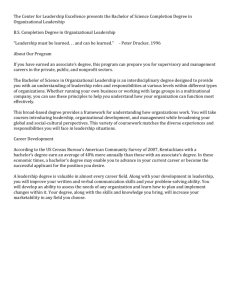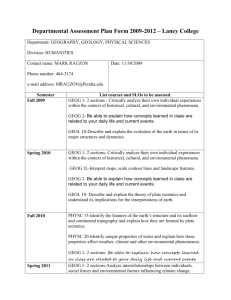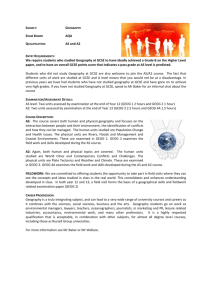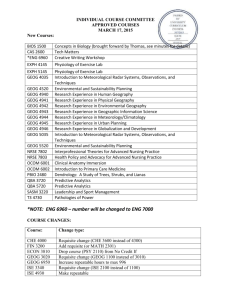The Vernacular Up North
advertisement
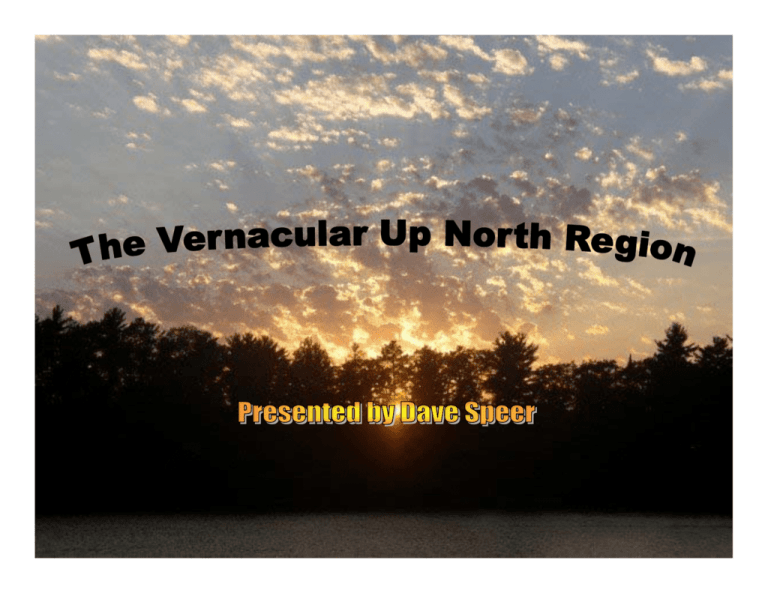
Geog 326 Introduction • Vernacular Regions – Defined by the collective perception of a group of people. – Not defined by any higher authority like the government or scholars – Everyone knows where the region is, but the area is not strictly defined • This presentation will investigate multiple features in order to better define the vernacular region unique to Wisconsin. • “Let’s Go Up North!” Geog 326 UP NORTH • Defining the northland region can be done by filtering out regional terms that appear in the greater extent of northern Wisconsin – Examples of Regional Terms acquired from the area’s phonebooks • Northwoods • Northbound • Northstar • This is the methodology that Wilbur Zelinski used in his study, “North America’s Vernacular Regions” Geog 326 Northland Terms Figure 1: 5% This map defines the northland by the percentage of “up north” terms used. Each isoline represents the percentage of northern terms. Highest Concentrations appear in Vilas, Bayfield, and Ashland Counties. 4% 5% 3% 2% 1% COUNTY − North_1 Rest of State "Up North" Shape_Length 1.512077 - 6.223834 0 Geog 326 15 30 60 90 120 Miles Figure 2: This choropleth map defines the northland terms weighted by population in ten thousands . North Terms Per 10,000 People 5% 4% 5% 3% 2% Bayfield and Ashland Counties fall out as leaders because the terms to population are not as significant of a ratio. 1% COUNTY NORTHPER10 0.0 - 0.7 − 0.8 - 1.8 1.9 - 4.2 4.3 - 8.9 Sawyer and Vilas take the cake 9.0 - 14.8 Shape_Length 1.512077 - 6.223834 Geog 326 0 15 30 60 90 120 Miles Other Determining Variables • Ask anyone why they go “up north” and they will almost always refer to recreational activities – Developed and undeveloped recreational land – Boating, swimming, camping, fishing, and hunting to name a few Geog 326 Forest Lake in Vilas County Figure 3: Recreational Acreage as Percent of Total The amount of land that is set aside for recreation also mimics the vernacular regional created by Zelinkski. 5% 4% 5% 3% 2% 1% The map to the right is a choropleth map showing COUNTY the amount of TOT_REC_LD as Percent of Total land devoted to recreation as a % of total. 0.000000000 - 0.5220 − 0.5221 - 1.385 1.386 - 3.353 3.354 - 5.448 5.449 - 7.635 Shape_Length 0 Geog 326 15 30 60 90 120 Miles Figure 4: Recreational land can be divided into two classes: developed and undeveloped recreational acreage. The northland dominates when it comes to undeveloped recreational land. The rest of the state holds the majority for developed. Recreational Acreage 4919957 5000000 4500000 4000000 3500000 3000000 2500000 rest of state 2000000 1277656 1500000 1000000 500000 68793 24940 0 Developed Rec Land Undeveloped Rec Land Geog 326 up north Figure 5: This choropleth map uses lake name data to show which counties hold the greatest density of lakes. Where there are lakes, there are recreation opportunities Lake Toponyms Figure 6: This graph reinforces the fact that there are more lakes in the North than the rest of the State 5% 4% 5% 3% 2% 1% Lake Names COUNTY 4500 Lake Names 4000 0.02 - 0.40 3500 3000 0.41 - 1.16 2500 1.17 - 3.15 2000 3.16 - 6.41 1500 − 6.42 - 10.88 1000 Shape_Length 500 1.512077 - 6.223834 0 South North Geog 326 0 15 30 60 90 120 Miles Figure 7: Another good indicator of the region tourism and recreation is the amount of hotel and motel beds available. The data in the map is weighted by population. The darkest values indicate that there is 3 to 41 people per hotel/motel bed in the given county. Hotel Beds Per Capita 5% 4% 5% 3% 2% 1% COUNTY POPULATION / Hotel_Beds − 3.175 - 41.36 41.37 - 82.99 83.00 - 183.5 183.6 - 351.6 351.7 - 1506 Shape_Length 1.512077 - 6.223834 0 15 30 Geog 326 60 90 120 Miles Figure 8:Fishing Licenses are a perfect example of types of data acquired by the Wisconsin Department of Natural Resources. Figure 8 shows the distribution of fishing licenses sold in a county based on its population. Darker counties show lower amounts of people per fishing license sold. Anomalies around the map may correspond with known tourist/fishing areas, such as the Wisconsin Dells, and Lake Winnebago. Resident Fishing License Per Capita 5% 4% 5% 3% 2% 1% COUNTY COUNTY.POPULATION / RES_FISH 1.004 - 3.703 3.704 - 5.942 5.943 - 9.318 9.319 - 14.49 14.50 - 27.24 Shape_Length Geog 326 − Figure 9: Using the 1985 and 2005 data from the Department of Natural Resources, a comparative analysis is possible for some components. Keeping in mind that Resident Fishing Licenses Per Capita this graph is a measure of fishing 12 10.18 licenses per capita; it is 10 possible to see that 8 7.16 fishing licenses have Up North 6 been on the rise. 4.97 Rest of State Up North went from 4.97 people per license in 1985 to 3.31 in 2005. The rest of the state went from 10.18 to 7.16 people per license 3.31 4 2 0 1985 Geog 326 2005 Figure 10: Camping opportunities is another variable that can be compared between two decades. The graph is not weighted at all so the numbers actually show a decline in camping opportunities over the years. Camping Opportunities By Year 620 600 596 589 580 560 It is interesting to note that the rest of the state actually has more camping opportunities. Up North 540 534 529 520 500 480 1985 Geog 326 2005 Rest of State Figure 11: Another great indicator of the northern vernacular region, is the presence of seasonal homes. Seasonal Homes 5% 4% 5% 3% 2% Often referred to as cabins or cottages, people use their seasonal home as a launch pad to nearby recreation. 1% COUNTY Cottages 110 - 1148 − 1149 - 2519 2520 - 4922 4923 - 7586 7587 - 12587 Higher concentrations appear in Vilas and Oneida counties. Shape_Length 1.512077 - 6.223834 Geog 326 0 15 30 60 90 120 Miles Conclusions • Developing a better perspective of the Up North Vernacular Region takes a multitude of different variables; even then, the area of the region is not definite. • Primary features of this region include: toponyms, recreation lands, location of seasonal homes, hotel/motel rooms, and recreational activities Geog 326 Bibliography • Cover Photo Taken by David Speer. Location: Lake Owen, Cable, Wisconsin • Wisconsin Department of Natural Resources, State Recreational Resources Inventory, 1985, 2005 • Zelinsky, W., “North America’s Vernacular Regions,” Annals, The American Association of Geographers, Vol. 10 (1980). pp. 1-16. • 2000 Census, U.S. Bureau of Census (Information and Research Services 2002). • Geographic Names Information CD-ROM, U.S. Department of Interior, U.S. Geological Survey, National Mapping Division, 1993. • ProPhone CD-ROM, Select Software, 1995 Edition. Geog 326
